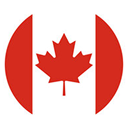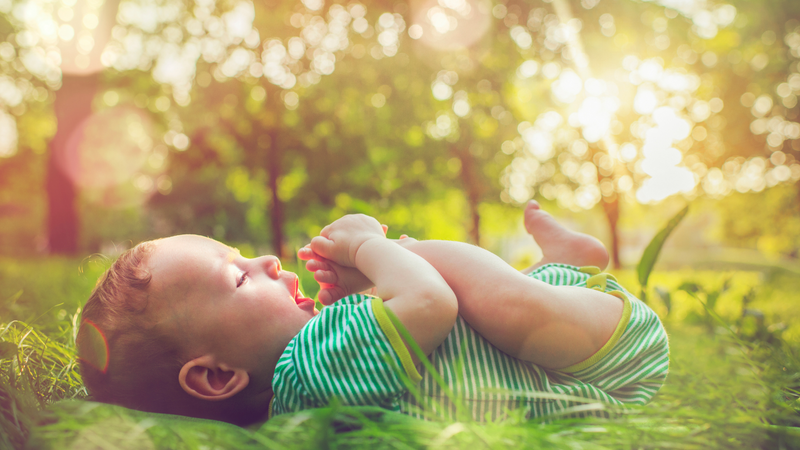Deciding to travel with your baby or infant can be exciting - but if the thought of boarding a plane with your little one makes you break into a cold sweat, you’re not alone.
The stress of worrying about how to get your little one to sleep on board the plane, what to do if they start crying, or how to deal with the sense of judgment from other passengers can feel overwhelming.
The good news is all it takes to have a safe, peaceful flight with your young child is a bit of preparation. Read on for the best tips for getting ready for your baby’s first flight.
How to Prepare For a Successful Flight
1. Choose safety over savings
You have two options when taking your baby with you on board: they could travel on your lap, or you could buy them a ticket. While carrying your baby on your lap might seem more cost-effective, experts agree that securing them in a seat is much safer. Unrestrained babies and infants are the leading cause of pediatric injuries on airplanes, so the cost of an extra ticket is worth it in the long run.
2. Book front row bulkhead seats for longer flights
When flying in a bulkhead seat, you can request a bassinet for your baby. This is especially helpful on longer flights, as it offers your baby a comfortable, secure place to sleep. Reach out to your airline to make this request as early as possible, and if it’s on a first-come-first-serve basis, arrive at the airport long before your flight.
If you’re traveling domestically, you don’t need to show identification for a child under 18. But you should still check the rules, as some airlines require you to show proof of your child’s age. To prevent complications, bring additional documents like a passport, immunization records, and birth certificate.
4. Check if you need a car seat for your babyCar seats are recommended for infants and babies under two. But some airlines have rules around how and where you can bring a car seat. For example, many require that car seats be placed near windows so they don’t block other passengers.
5. Consider investing in a travel stroller
Gate checking a stroller is an additional hassle that’s never easy, especially with a baby in tow. So invest in a travel stroller instead, and save yourself time and energy. They’re lightweight and compact enough to fit into your overhead compartment when collapsed.
Every airline has its own baggage policies, so call ahead to know exactly what you can and can’t bring onboard. Most airlines will allow you to bring a diaper bag, breast pump, cooler bag, and car seat onboard, but not all will allow it for lap babies.
7. Pack spare clothes in your carry on
Accidents happen with babies - literally. So be prepared. When it comes to clothes, pack more in your carry-on than you think is necessary, and take spare clothes for yourself.
8. The 1L liquids rule might not apply to you
Parents are luckily allowed to bring more liquids onboard than the standard one-liter maximum that TSA requires for regular passengers. Read through your airline’s policies regarding bringing formula or breast milk.
9. Store your milk and formula safely
Packing breast milk? Store it in clear, translucent bottles.
Packing ready-to-feed formula? Bring an unopened container and empty bottles with you on board.
Packing powdered formula? Fill a bottle with clean water, and bring a small formula container with a scoop.
10. Pack toddler- friendly snacks
If your child has already started eating solid foods, bring some healthy snacks for the flight. Fill containers with pre-chopped fruit, steamed vegetables, crackers, and other bite-sized foods.
11. Choose to board later
Pre-boarding might seem like a safer option on the outside, but it has its downsides. If you board too early, you have to spend a significantly longer time keeping your baby entertained in its seat while everyone else starts boarding. Instead, spend some more time walking around the terminal with your baby before your flight, and if you have a friend or family member with you, ask them to board first with your bags.

How to Keep Your Baby Happy During a Flight
12. Relieve ear pressure with feedings, bottles, or dummies
Getting your baby to engage in swallowing during takeoff and landing can help relieve ear pressure. So plan to nurse during this time, or give your baby a bottle or pacifier.
13. Prepare your baby for a comfortable flight
The best way to ensure a quiet, calm flight is by engaging in typical bedtime routines with your little one. Have them wear their pajamas, bring a soft, familiar toy, and take a pacifier with you if that’s what your baby is used to. The more comfortable they are, the more comfortable you will be.
14. Keep your usual routine
If there’s a specific book you read to your little one each night, take it with you. If they like to listen to a particular lullaby, sing it to them. Any familiarity with your routine will make the act of flying much more comfortable for your child.
15. Bring new toys for entertainment
If you get your child to fall asleep during the flight successfully, that’s a major win. But once they wake up, your primary responsibility will be to keep them occupied. So bring small toys your child hasn’t played with or books you haven’t read to them yet to keep them stimulated.
16. Wait to disembark
Don’t rush to get up with everyone else when the plane lands. Instead, take your time to gather your things, and wait until your row is a little less crowded to get up.
Key Takeaways
Considering all the details before your flight is one of the best ways to ensure a safe, comfortable trip for you and your little one. Use these tips to be as prepared as possible, no matter what planning stage you're in.
For even more information on flying with babies and infants, check out this blog post.



